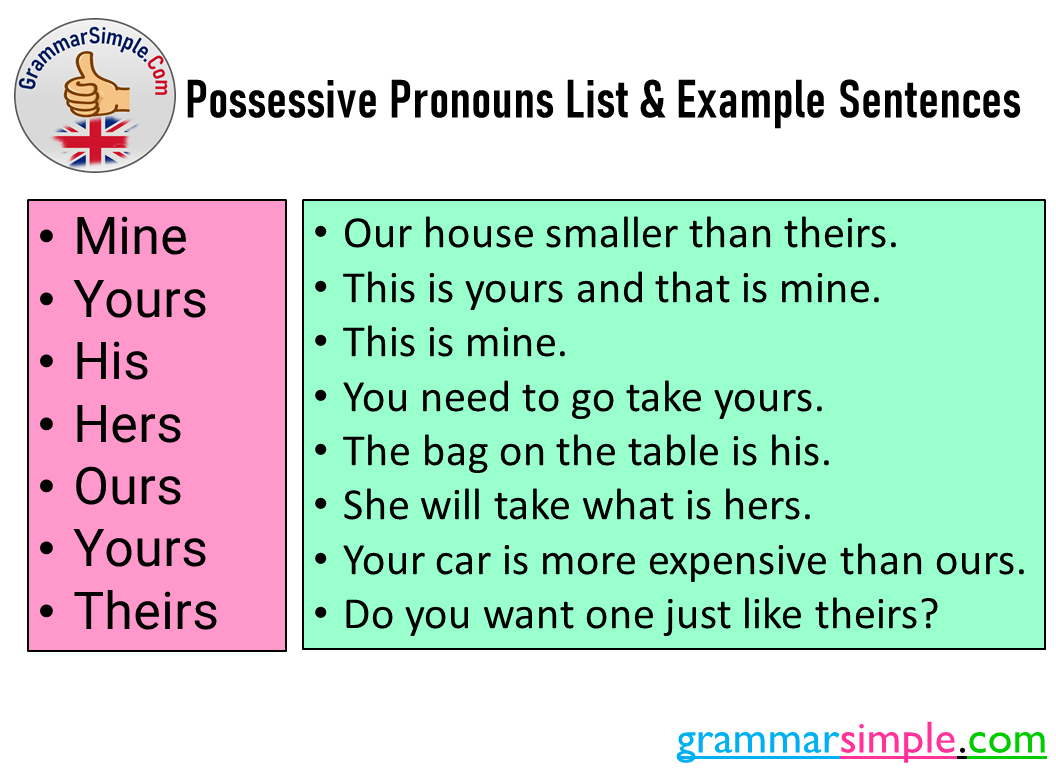Possessive Pronouns List & Example Sentences


Possessive Pronouns List & Example Sentences
Table of Contents
Possessive Pronouns
Let’s start with the possessive pronouns, also called absolute possessive pronouns. Possessive pronouns simplify the structures that indicate the possessiveness of a noun by changing it—in other words, independent possessive pronouns should stand alone and be used without a noun. To understand how possessive pronouns can make things simpler and clearer, first, take a look at this example of sentences that don’t use possessive pronouns:
Jane’s red roses looked prettier than my red roses.
Jane’s red roses looked prettier than mine.
Saying “red rose” twice in the first sentence above sounds a bit repetitive and a little redundant. Rewriting it with a possessive pronoun will make things much easier.
My cousin’s clothes are cleaner than mine.
My cousin’s clothes are cleaner than mine.
In this example given, saying “clothing” twice in the first sentence made us repeat ourselves. Using the possessive pronoun in the second sentence made things easier and made the sentence simpler and more understandable.
What is the Difference Between Possessive Adjectives and Possessive Pronouns?
Both possessive adjectives and possessive pronouns are patterns used to indicate whom the nouns belong to. Possessive Adjectives are adjectives and therefore come before words, but Possessive Pronouns are pronouns and stand for certain words or certain phrases.
- Mine
- Yours
- His
- Hers
- Ours
- Yours
- Theirs
Example Sentences;
- Our house smaller than theirs.
- This is yours and that is mine.
- This is mine.
- You need to go take yours.
- The bag on the table is his.
- She will take what is hers.
- Your car is more expensive than ours.
- Do you want one just like theirs?
Recent Posts
Use Rose in a Sentence, How to Use Rose with Example Sentences
Use Rose in a Sentence, How to Use Rose with Example Sentences
Use Yourself in a Sentence, How to Use Yourself with Example Sentences
Use Yourself in a Sentence, How to Use Yourself with Example Sentences
Use Picture in a Sentence, How to Use Picture with Example Sentences
Use Picture in a Sentence, How to Use Picture with Example Sentences
Use Claim in a Sentence, How to Use Claim with Example Sentences
Use Claim in a Sentence, How to Use Claim with Example Sentences
Use Treasure in a Sentence, How to Use Treasure with Example Sentences
Use Treasure in a Sentence, How to Use Treasure with Example Sentences
Use Raise in a Sentence, How to Use Raise with Example Sentences
Use Raise in a Sentence, How to Use Raise with Example Sentences